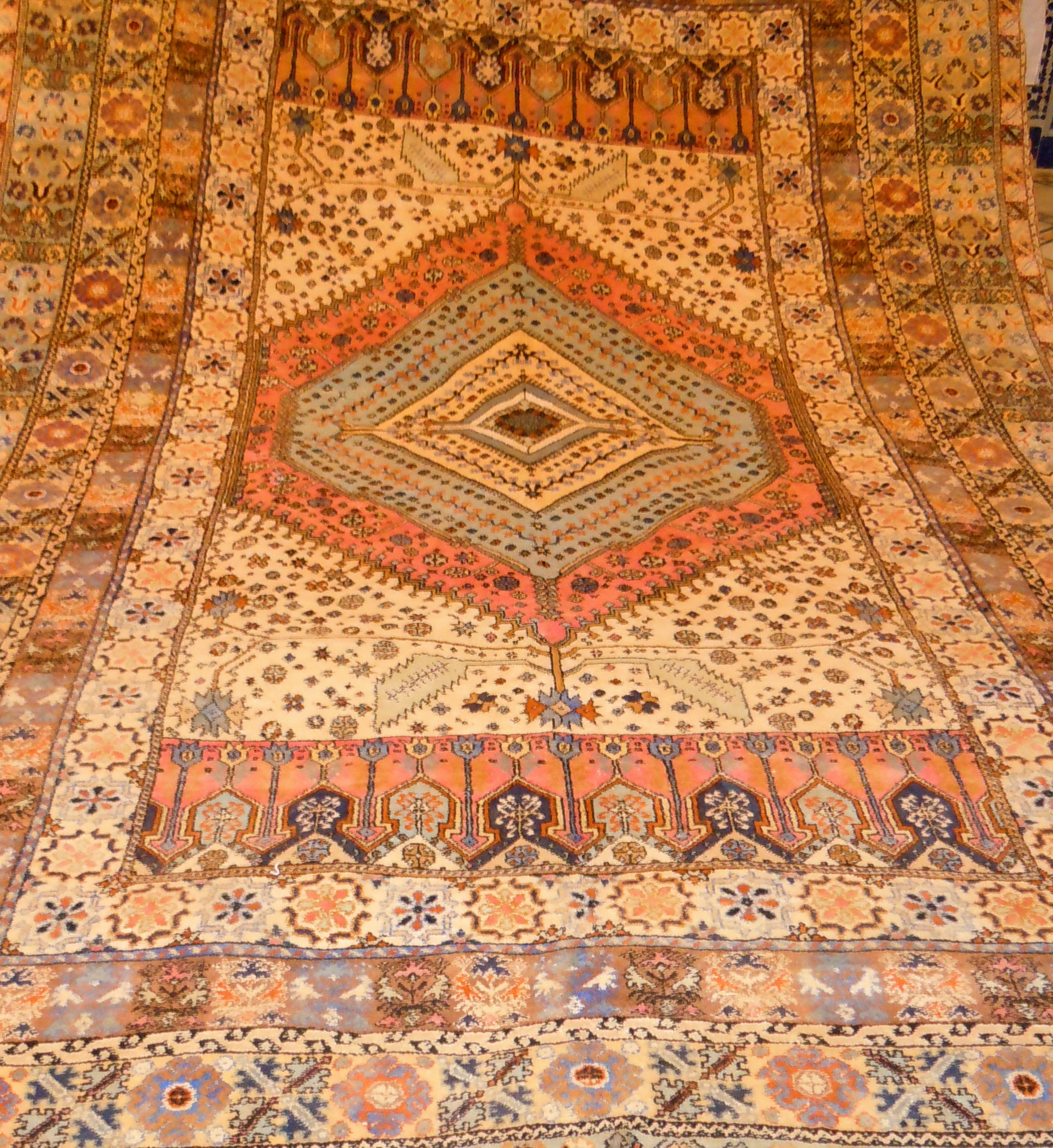Moroccan carpets are beyond decorative pieces; they are a tribute of deep cultural heritage and artistry that goes beyond borders. Coming from the distinct landscapes and colorful communities of Morocco, these rugs represent the stories, traditions, and craftsmanship of their makers. Each knot tells a narrative, each pattern reflects a lineage, and every color palette evokes the breathtaking beauty of Moroccan landscapes. As they make their way into modern homes across the globe, they serve as a bridge connecting us to the artistry and history of this fascinating North African country.
Integrating Moroccan rugs into your home decor is more than aesthetic appeal; it is about celebrating a legacy. These rugs offer warmth, texture, and an undeniable character that can transform any space. Whether you choose a classic Berber rug with its geometric designs or a more intricate tribal piece, you are inviting a piece of Morocco into your life, adding depth and meaning to your living environment. As you explore the world of Moroccan rugs, you will discover how they can seamlessly integrate with contemporary styles while still preserving their timeless essence.
Stories of Berber Rugs
Moroccan rugs have a colorful history that goes back hundreds of years, deeply entrenched in the heritage of the native tribes. These native people have made rugs as a form of art, using weaving techniques passed down through generations. The vibrant colors and intricate patterns found in these carpets often reflect the environment, daily life, and values of the craftspeople, making each item a distinct representation of its culture.
The role of rugs in Morocco’s culture extends beyond mere decoration; they serve utility in routine life and are essential to celebrations and festivities. Traditionally, these carpets were made from organic substances such as wool from sheep and cotton, allowing for strength and warmth in the different climate of the region. The methods involved in creating these textiles often included communal participation, building relationships within the groups.
As commercial pathways expanded, Morocco’s carpets gained worldwide fame, attracting the attention of adventurers and buyers alike. In the 1950s and 1960s, global interest in hand-made art further boosted the renown of Moroccan carpets, leading to a revival in traditional weaving practices. Today, these rugs continue to symbolize cultural heritage, reflecting the essence of Moroccan art while appealing to contemporary design in home décor.
Methods and Materials
Moroccan rugs are renowned for their unique artistry, which often involves classic methods shared through ages. Weaving methods change between areas, with some artisans utilizing stitches to create intricate patterns while others apply flat-weaving techniques. Each method contributes to the feel, strength, and entire design of the rugs, ensuring that no two pieces are the same. This artisanal approach demonstrates the cultural legacy and creative expression of the Berber communities.
The materials used in Moroccan rug crafting play a pivotal role in affecting the quality and look of the finished product. Typical fibers are wool, natural cotton, and at times silk, with wool being the most frequent due to its coziness and durability. bohemian rug obtain materials from nearby, which not only boosts the local economy but also guarantees that the rugs capture the essence of the surrounding locale. Natural dyes sourced from vegetation and earth are frequently applied, resulting in bright colors that linger vivid over time.

In addition to the methods and components, the designs of Moroccan rugs are profoundly representative, often representing the weaver's personal narratives and traditions. Geometric patterns, tribal patterns, and natural imagery represent the environment and heritage of the region. Each element serves a meaning, whether it is to communicate protection, growth, or a link to the earth. This mix of components, methods, and signs makes Moroccan rugs not just ornamental objects but meaningful narrators of the rich artistic heritage they come from.
Cultural Influence and Meaning
Rugs from Morocco possess deep cultural significance, demonstrating the deep-rooted history and traditions of the Berber tribes. Every rug is distinct, intricately woven with icons and patterns that tell stories, values, and regional traditions. The bright colors and designs often represent the environment, history, and even the spiritual beliefs of the weaver, making these rugs not only decorative but also profound pieces of craft that pay homage to the legacy of their creators.
In addition to their artistic value, Moroccan rugs function as a connection to the past and a means of continuing traditional craftsmanship. The skills of weaving have been transmitted through epochs, with every piece representing the cultural identity and collective of the weaver. By incorporating these rugs into interior design, individuals are not only supporting the preservation of this ancient craft but also embracing the histories and life journeys embedded within every rug.
Furthermore, Moroccan rugs often foster a sense of warmth and welcoming, which is a cornerstone of Moroccan culture. Traditionally used in homes to establish inviting ambiences, these rugs contribute to a welcoming atmosphere while embodying values of community and belonging. By decorating with Moroccan rugs, homeowners can create a sense of cultural appreciation and enhance their living spaces with the rich legacy of Morocco’s artistic heritage.
